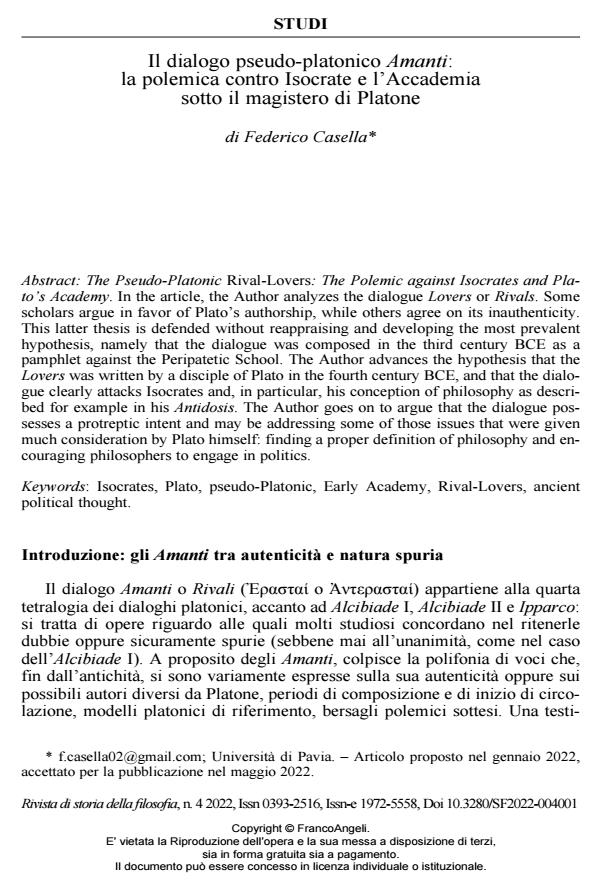The Pseudo-Platonic Rival-Lovers: The Polemic against Isocrates and Plato’s Academy.
Journal title RIVISTA DI STORIA DELLA FILOSOFIA
Author/s Federico Casella
Publishing Year 2023 Issue 2022/4
Language Italian Pages 20 P. 609-628 File size 308 KB
DOI 10.3280/SF2022-004001
DOI is like a bar code for intellectual property: to have more infomation
click here
Below, you can see the article first page
If you want to buy this article in PDF format, you can do it, following the instructions to buy download credits

FrancoAngeli is member of Publishers International Linking Association, Inc (PILA), a not-for-profit association which run the CrossRef service enabling links to and from online scholarly content.
In the article, the Author analyzes the dialogue Lovers or Rivals. Some scholars argue in favor of Plato’s authorship, while others agree on its inauthenticity. This latter thesis is defended without reappraising and developing the most prevalent hypothesis, namely that the dialogue was composed in the third century BCE as a pamphlet against the Peripatetic School. The Author advances the hypothesis that the Lovers was written by a disciple of Plato in the fourth century BCE, and that the dialogue clearly attacks Isocrates and, in particular, his conception of philosophy as described for example in his Antidosis. The Author goes on to argue that the dialogue possesses a protreptic intent and may be addressing some of those issues that were given much consideration by Plato himself: finding a proper definition of philosophy and encouraging philosophers to engage in politics.
Keywords: Isocrates, Plato, pseudo-Platonic, Early Academy, Rival-Lovers, ancient political thought.
Federico Casella, Il dialogo pseudo-platonico Amanti: la polemica contro Isocrate e l’Accademia sotto il magistero di Platone in "RIVISTA DI STORIA DELLA FILOSOFIA" 4/2022, pp 609-628, DOI: 10.3280/SF2022-004001